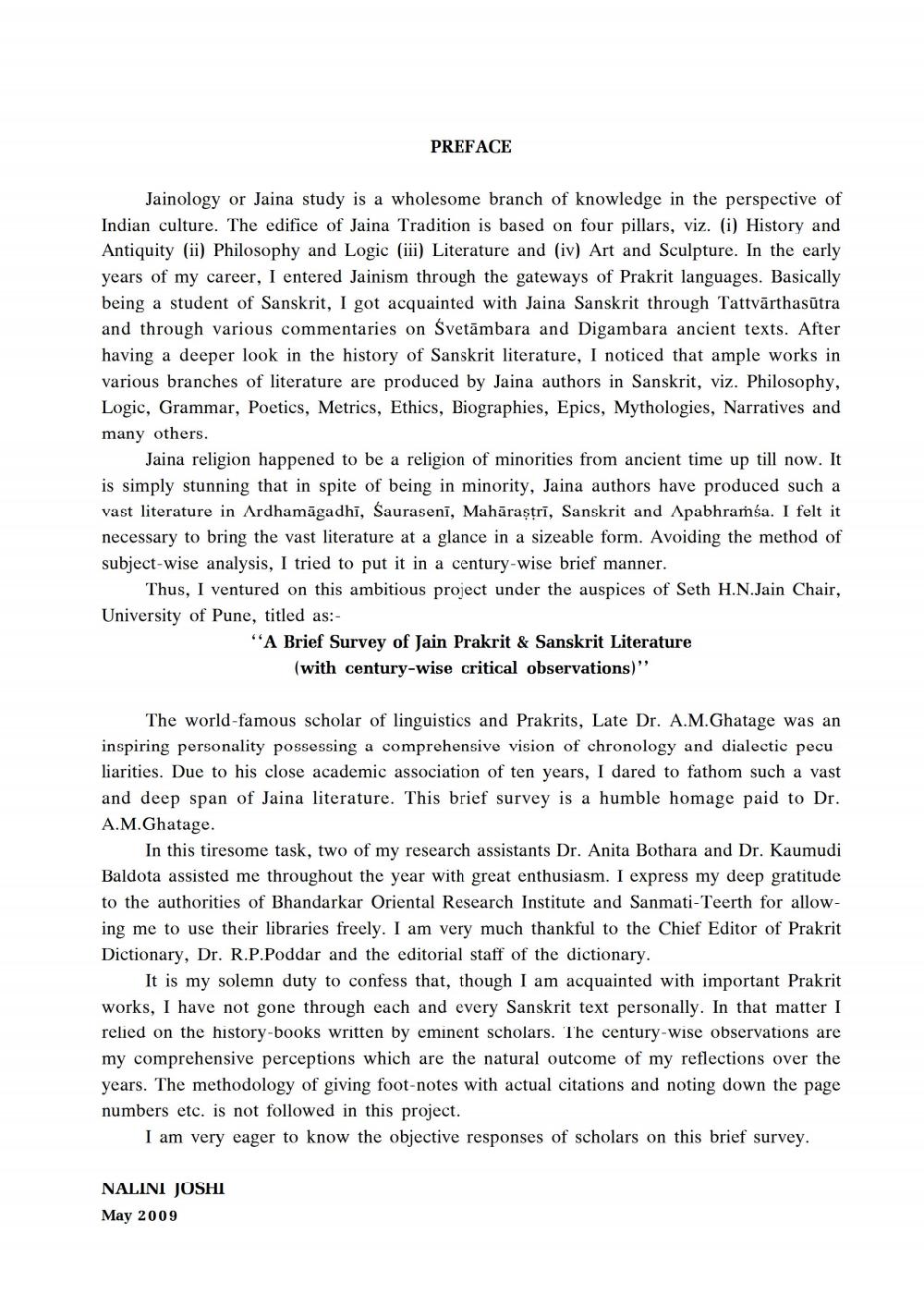Book Title: Brief Survey of Jaina Prakrit and Sanskrit Literature Part 1 Author(s): Nalini Joshi Publisher: Sanmati Tirth Prakashan Pune View full book textPage 6
________________ PREFACE Jainology or Jaina study is a wholesome branch of knowledge in the perspective of Indian culture. The edifice of Jaina Tradition is based on four pillars, viz. (i) History and Antiquity (ii) Philosophy and Logic (iii) Literature and (iv) Art and Sculpture. In the early years of my career, I entered Jainism through the gateways of Prakrit languages. Basically being a student of Sanskrit, I got acquainted with Jaina Sanskrit through Tattvārthasūtra and through various commentaries on Svetāmbara and Digambara ancient texts. After having a deeper look in the history of Sanskrit literature, I noticed that ample works in various branches of literature are produced by Jaina authors in Sanskrit, viz. Philosophy, Logic, Grammar, Poetics, Metrics, Ethics, Biographies, Epics, Mythologies, Narratives and many others. Jaina religion happened to be a religion of minorities from ancient time up till now. It is simply stunning that in spite of being in minority, Jaina authors have produced such a vast literature in Ardhamāgadhi, Saurasenī, Mahāraştrī, Sanskrit and Apabhraṁsa. I felt it necessary to bring the vast literature at a glance in a sizeable form. Avoiding the method of subject-wise analysis, I tried to put it in a century-wise brief manner. Thus, I ventured on this ambitious project under the auspices of Seth H.N.Jain Chair, University of Pune, titled as: "A Brief Survey of Jain Prakrit & Sanskrit Literature (with century-wise critical observations)" The world-famous scholar of linguistics and Prakrits, Late Dr. A.M.Ghatage was an inspiring personality possessing a comprehensive vision of chronology and dialectic pecu liarities. Due to his close academic association of ten years, I dared to fathom such a vast and deep span of Jaina literature. This brief survey is a humble homage paid to Dr. A.M.Ghatage. In this tiresome task, two of my research assistants Dr. Anita Bothara and Dr. Kaumudi Baldota assisted me throughout the year with great enthusiasm. I express my deep gratitude to the authorities of Bhandarkar Oriental Research Institute and Sanmati-Teerth for allowing me to use their libraries freely. I am very much thankful to the Chief Editor of Prakrit Dictionary, Dr. R.P.Poddar and the editorial staff of the dictionary. It is my solemn duty to confess that, though I am acquainted with important Prakrit works, I have not gone through each and every Sanskrit text personally. In that matter I relied on the history books written by eminent scholars. The century-wise observations are my comprehensive perceptions which are the natural outcome of my reflections over the years. The methodology of giving foot-notes with actual citations and noting down the page numbers etc. is not followed in this project. I am very eager to know the objective responses of scholars on this brief survey. NALINI JOSHI May 2009Page Navigation
1 ... 4 5 6 7 8 9 10 11 12 13 14 15 16 17 18 19 20 21 22
